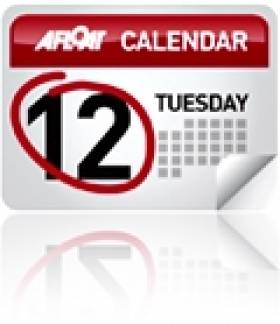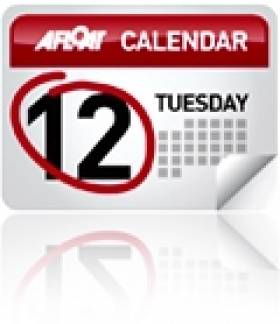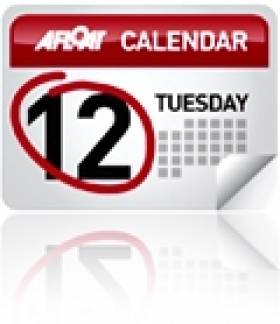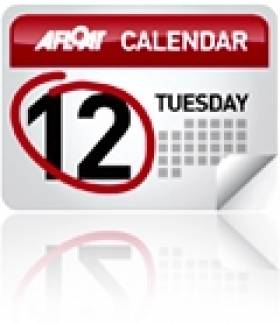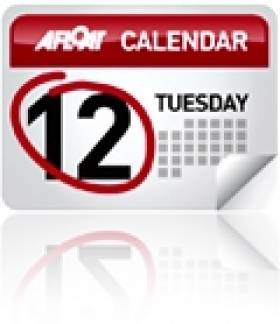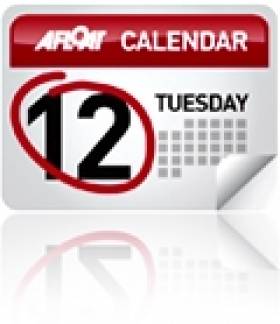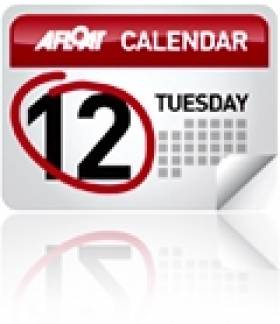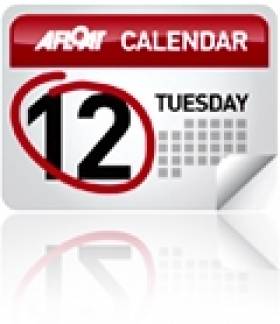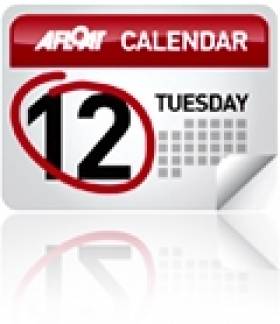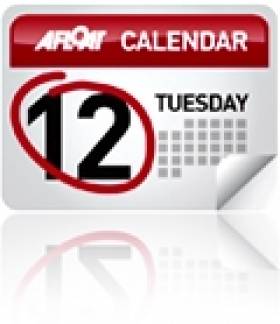Displaying items by tag: lecture
Lecture: Mutiny & Murder on the Earl of Sandwich
#Lecture - "Mutiny & Murder on the Earl of Sandwich", a public lecture by Peter Brady marks the final lecture season organised by Baltimore Maritime Centre which is held in Dublin.
The illustrated talk is take place in Poolbeg Yacht & Boat Club in the heart of the working port on Thursday 16th April at 8pm. Entry is €5 and is aid of the RNLI.
The lecture is a tale of piracy and will relive the fateful voyage of The Earl of Sandwich" which sailed from Tenerife November 1765 with a valuable cargo of wine, silk and other goods. Also told will be how the story is closely linked with Cork, Carlow, Kildare, Wexford, and numerous Dublin locations, including Ringsend and the Muglins off Dalkey.
In the 18th century, conditions of pay and work were poor; injury and ill health were a constant risk; and life expectancy was no more than 45 years.
Such was the life of a merchant seaman as the Earl of Sandwich departed London for the Canary Islands on 10 August 1765.
At Tenerife, the ship was laden with wine, silk and other goods, including a rich cargo of coin, which ultimately proved too much of a temptation for some.
Peter has been a sports diver in 1980 and with links in his interest of maritime history to his early dives on the wreck of the Tayleur at Lambay Island.
His research into the 'Earl of Sandwich' began with the stories he heard of how pirates were once hung on the Muglins. The information he has gathered adds new insights into the tale of the ship, its crew and its passengers.
The winter lectures series will resume in the same venue of Poolbeg but not until the Autumn.
#Lecture: - Baltimore Maritime Centre's 2015 Winter Lecture Series presents 'Stay In the Boat: How Not to Lose the Run of Yourself Crossing the Atlantic'
The lecture to be presented by Theo Dorgan and held on Thursday 5 February starts at 20:00. The venue is the Poolbeg Yacht and Boat Club, Ringsend, Dublin.
All are welcome. Admission of €5 in aid of the RNLI.
Theo Dorgan is a poet, novelist, translator, editor and broadcaster. A late vocation sailor, he has also written two non-fiction books recounting Atlantic crossings.
In 'Sailing for Home', he tells how he and three others sailed the 70ft schooner, Spirit of Oysterhaven', from Antigua to Kinsale.
Some years later, in a similar-sized boat but with, understandably, a bigger crew, he made the crossing from Chile to South Africa, telling that story in 'Time On The Ocean', a voyage from Cape Horn to Cape Town.
Dorgan is a Shoreline supporter of the RNLI, and always glad to help with fundraising and with publicising their much-admired work.
He will read extracts from both of his sailing books, from his novel which is set at sea in the Mediterranean. Also to be read from his new collection of poems, 'Mine Bright Shiners', in which the sea features prominently.
WSS Lecture: The Galway Hooker – History, Building & Sailing
#WSSlecture – The Cobh branch of the World Ship Society (WSS) continues its 2015 winter monthly meetings programme with the lecture: The Galway Hooker – History, Building and Sailing.
The lecture presented by Kevin Twomey.is next Tuesday 17 February (starting at 20.00) and takes place as usual in the Commodore Hotel, Cobh.
Further presentations are held (on the third Tuesday of each month) until this June.
Presentations are made during the winter months while in the summer period is spiced with visits to ships in the port.
Cobh's WSS branch is the only branch of the society in the Republic of Ireland and this year they celebrate 10 years having been established in 2005.
Over that time the branch have made tours to include visits to Poland, Sweden and the UK.
For further details about the WSS organisation founded in 1946, click HERE.
Lecture: The Asgard, from Launch to Gun Running to Conservation
#AsgardLecture - The History of Asgard, from Launch to Gun Running to Conservation is the title of a lecture by Pat Murphy which is to take place in the National Maritime Museum of Ireland, Dun Laoghaire.
The lecture is on Thursday November 20th (8pm). Tickets costing €10 will be made available at the door opening at 7.30pm.
Murphy will tell the life of this famous yacht in Irish history from her launch in 1905 to current conservation in Collin's Barracks Museum.
Asgard undertook a 23 day voyage that centred on the dangerous mission to collect guns and ammunition for the Irish Volunteers. The landing of the arms took place in Howth Harbour in July 1914 and this historical event is described in detail with unique photographs.
The lecture will also feature Conor O'Brien's Kelpie and the Kilcoole landing.
In this centenary year of the anniversary of the Howth gunning event, the lecture will also cover commemorative celebrations.
In addition to tickets payable at the door, bookings can be made in advance by email: [email protected] and by contacting the NMMI on (01) 2143 964
For more details about the Maritime Institute of Ireland's museum which has a gift shop and café, visit: www.mariner.ie
Lecture: "Ireland, How Stands Our Island Nation?
#Lecture - The Dublin Bay Old Gaffers Association's (DBOGA) next lecture "Ireland, How Stand Our Island nation? is to be presented by Tom MacSweeney on Tuesday November 18th at the Poolbeg Yacht Boat Club & Marina, Dublin.
The talk which forms part of the winter lecture programme, starts at 8 pm but the organisers are encouraging those wishing to attend to assemble at 7.15 pm for a socialable drink in advance.
All are welcome to the Poolbeg clubhouse which overlooks the marina and faces the entrance to Alexandra Basin. From here all sorts of shipping activities of the commercial port can be viewed in closer detail.
To reach the clubhouse if travelling from the southside along the Merrion Road take the connecting Sean Moore Road that leads onto the South Bank at Pigeon House Road, Ringsend. Or if travelling from the northside cross the Liffey via the East-Link Toll Bridge.
For further information on the lectures programme and in general about the DBOGA, click HERE.
To contact the Poolbeg Yacht Boat Club & Marina (PYBC) Tel: (01) 668 9983
Lecture: Local Aspects of the Howth Gun-Running
#HowthGunRunning – A lecture entiltled 'Local Aspects of the Howth Gun Running' will be presented by Diarmuid Ó Cathasaigh on Tuesday 22 April at 8pm.
The lecture will no doubt draw great interest and as the topic surrounds a period in our history a century ago when munitions were secretly landed from the Asgard for the Irish Volunteers in 1914.
All are welcome to the lecture held in the Howth Angling Centre, West Pier, Howth Harbour and which is organised by the Howth Peninsula Historical Society, non-members entrance fee of €5.
#Lecture- "Dublin Bay, the Cradle of Yacht Racing-Rewriting the Story of our Sport", a public lecture by Hal Sisk, yachting historian is to be held next Thursday 3 April (8pm) at the Poolbeg Boat and Yacht Club, Ringsend in Dublin 4.
This is the final lecture of the Members of Glenua & Friends 2013-14 series held in the Ringsend venue from where there is a lecture entrance fee of €5 in aid of RNLI. For further details contact: 087 2129614.
The current series was very well attended and the organisers wish to thank you for your valuable support in that regard. Lectures will return in October and no doubt bringing more fascinating topics in the cosy surroundings of the Poolbeg clubhouse and bar.
Returning to the final lecture of this season, the topic of the amateur sport of sailing, as we know it, first emerged, not in Holland, not in Cowes, and not even in Cork, but right here in Dublin Bay!
Earlier "yachting" episodes used entirely professional crews, and the yacht owners and friends were little more than passengers. But from the 1850s in Dublin Bay the sport developed with active leisure sailors actually learning to sail and race their yachts themselves, as we all do today. And for two decades, 1855 to 1875, Dubliners led the world in shaping the sport, including setting the original rules, and also introducing such innovations as offshore and singlehanded racing.
With many illustrations from the paintings and photographs of the period, yachting historian Hal Sisk will show how much of a challenge it was to be the pioneers, and in what kind of yachts they sailed.
Hal's restorations of the classic yachts Vagrant and Peggy Bawn are exemplary in authenticity, and he has entertained audiences in five continents with his enthusiastic presentations.
Lecture: “An Irish Corvette at War – HMS Oxlip to LE Maeve”
#Lecture - "An Irish Corvette at War – HMS Oxlip to Le Maeve" is to be presented by John Treacy and will be held tomorrow (Thursday) at 8pm at the Stella Maris Seafarer's Club, 3 Beresford Place, Dublin.
The LE Maev served the Irish State for almost a quarter of a century, during some of the darkest periods of Irish naval policy. Suffering from a chronic lack of economic resources, flagging political support and a comical social perception, the Maev and her sisters struggled to provide the maritime security envisaged after the Emergency. To read more on this lecture topic click link.
All are welcome to attend the evening lecture organised by the Maritime Institute of Ireland which is held at the city-centre venue where a bar and refreshments are available. A voluntary contribution is payable to the door to the M.I.I. which runs the National Maritime Museum (NMMI) in Dun Laoghaire.
The lecture organisers would be pleased for anyone to kindly forward details about the lecture programme, held on the third Thursday of each month.
Public transport: The nearest DART stations are Connolly Station and at Tara Street in addition to the LUAS (Red) line stop at Busáras. Car parking is located in the Irish Life Mall (ILAC) on Lower Abbey Street.
Lecture: Shackleton's Cabin on the Quest
#ShackletonsCabin – Shackleton's Cabin from the Quest where he died on 5 January 1921 is the topic of a talk this Saturday, 8 March at 4pm in the Royal St. George Yacht Club, Dun Laoghaire Harbour.
The speaker and owner of Shackleton's Cabin is Mr. Ulf Bakke, who is a grandson of the shipyard owner that acquired the Quest on its return from Antarctica in 1921 when it was converted into a Sealer. The cabin was removed and has been safely maintained ever since in Norway.
All are welcome to the talk in the yacht club venue. Admission fee of €10.
Nearby you can also relive the life story of the Irish born polar explorer at the Shackleton Endurance Exhibition and gift shop located in the ferryport terminal.
The terminal will see the return of Stena Line's HSS fast-craft operated seasonal-service to Holyhead starting on 9 April.
Lecture: "Cork During the American War of Independence: 1775-1783"
#Lecture – "Cork During the American War of Independence: 1775-1783" is the title of the lecture presented by Joe Varley and held in Stella Maris Seafarers Club, 3 Beresford Place, Dublin this Thursday 20 February (8pm).
The illustrated lecture focuses on the huge increase in trade brought about by Cork Merchants supplying the British military with essential supplies during the war.
All are welcome to attend the evening lecture organised by the Maritime Institute of Ireland which is held at the city-centre venue where a bar and refreshments are available. A voluntary contribution is payable to the door to the M.I.I. which runs the National Maritime Museum (NMMI) in Dun Laoghaire.
The lecture organisers would be pleased for anyone to kindly forward details about the lecture programme, held on the third Thursday of each month.
Public transport: The nearest DART stations are Connolly Station and at Tara Street in addition to the LUAS (Red) line stop at Busáras. Car parking is located in the Irish Life Mall (ILAC) on Lower Abbey Street.


























